
RMS Olympic was a British ocean liner and the lead ship of the White Star Line's trio of Olympic-class liners. Olympic had a career spanning 24 years from 1911 to 1935, in contrast to her short-lived sister ships, Titanic and Britannic. This included service as a troopship during the First World War, which gained her the nickname "Old Reliable", and during which she rammed and sank the U-boat U-103. She returned to civilian service after the war, and served successfully as an ocean liner throughout the 1920s and into the first half of the 1930s, although increased competition, and the slump in trade during the Great Depression after 1930, made her operation increasingly unprofitable. Olympic was withdrawn from service and sold for scrapping on 12 April 1935 which was completed in 1937.

Harold Sydney Bride was a British merchant seaman and the junior wireless officer on the ocean liner RMS Titanic during her ill-fated maiden voyage.

William McMaster Murdoch, RNR was a Scottish sailor, who was the first officer on the RMS Titanic. He was the officer in charge on the bridge when the ship collided with an iceberg, and was one of the more than 1,500 people who died when the ship sank.

Violet Constance Jessop was an Argentine ocean liner stewardess and nurse in the early 20th century. Jessop is most well known for having survived the sinking of both the RMS Titanic in 1912 and her sister ship the HMHS Britannic in 1916, as well as having been onboard the eldest of the three sister ships, the RMS Olympic, when it collided with the British warship HMS Hawke in 1911.
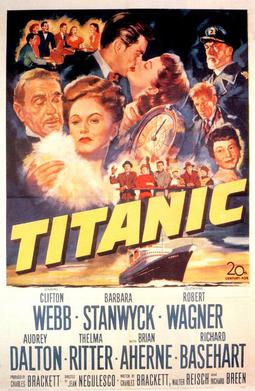
Titanic is a 1953 American drama film directed by Jean Negulesco and starring Clifton Webb and Barbara Stanwyck. It centers on an estranged couple and other fictional passengers on the ill-fated maiden voyage of the RMS Titanic, which took place in April 1912.

Titanic is a 1943 German propaganda film made during World War II in Berlin by Tobis Productions for UFA, depicting the catastrophic sinking of RMS Titanic in 1912. This was the third German language dramatization of the event, following a silent film released in 1912 just four months after the sinking and a British produced German film about the disaster in 1929.

Saved from the Titanic was a 1912 American silent short film starring Dorothy Gibson, an American film actress who survived the sinking of the RMS Titanic on April 15, 1912. Premiering in the United States just 31 days after the event, it was the earliest dramatization of the tragedy.
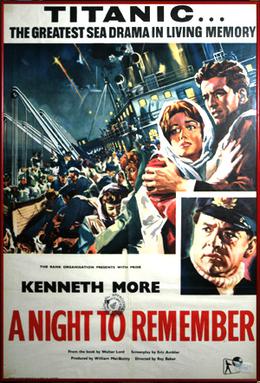
A Night to Remember is a 1958 British historical disaster docudrama film based on the eponymous 1955 book by Walter Lord. The film and book recount the final night of RMS Titanic, which sank on her maiden voyage after she struck an iceberg in 1912. Adapted by Eric Ambler and directed by Roy Ward Baker, the film stars Kenneth More as the ship's Second Officer Charles Lightoller and features Michael Goodliffe, Laurence Naismith, Kenneth Griffith, David McCallum and Tucker McGuire. It was filmed in the United Kingdom and tells the story of the sinking, portraying the main incidents and players in a documentary-style fashion with considerable attention to detail. The production team, supervised by producer William MacQuitty used blueprints of the ship to create authentic sets, while Fourth Officer Joseph Boxhall and ex-Cunard Commodore Harry Grattidge worked as technical advisors on the film. Its estimated budget of up to £600,000 was exceptional and made it the most expensive film ever made in Britain up to that time. The film's score was written by William Alwyn.

The Titanic has played a prominent role in popular culture since her sinking in 1912, with the loss of over 1,500 of the 2,200 lives on board. The disaster and the Titanic herself have been objects of public fascination for many years. They have inspired numerous books, plays, films, songs, poems, and works of art. The story has been interpreted in many overlapping ways, including as a symbol of technological hubris, as basis for fail-safe improvements, as a classic disaster tale, as an indictment of the class divisions of the time, and as romantic tragedies with personal heroism. It has inspired many moral, social and political metaphors and is regularly invoked as a cautionary tale of the limitations of modernity and ambition.

Atlantic (1929) is an all-talking sound British drama film directed and produced by Ewald André Dupont and starring Franklin Dyall and Madeleine Carroll. Originally, two versions were made, the English and German-language version Atlantik were shot simultaneously. Subsequently, the production of a French version (Atlantis) began in spring 1930 using different footage and partially an altered storyline with a different director. The fourth version was released as a silent film. The story was taken from the West End play The Berg by Ernest Raymond. Although the film will enter the public domain on January 1, 2025, it is available online. It was one of the most expensive films of 1929.

RMS Titanic sank in the early morning hours of 15 April 1912 in the North Atlantic Ocean, four days into her maiden voyage from Southampton to New York City. The largest ocean liner in service at the time, Titanic had an estimated 2,224 people on board when she struck an iceberg at around 23:40 on Sunday, 14 April 1912. Her sinking two hours and forty minutes later at 02:20 ship's time on Monday, 15 April, resulted in the deaths of more than 1,500 people, making it one of the deadliest peacetime maritime disasters in history.

The Olympic-class ocean liners were a trio of British ocean liners built by the Harland & Wolff shipyard for the White Star Line during the early 20th century. They were Olympic (1911), Titanic (1912) and Britannic (1914). All three were designed to be the largest and most luxurious passenger ships at that time, designed to give White Star an advantage in the transatlantic passenger trade.
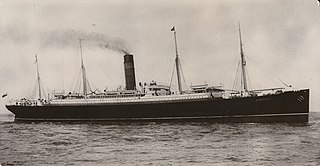
RMS Carpathia was a Cunard Line transatlantic passenger steamship built by Swan Hunter & Wigham Richardson in their shipyard in Wallsend, England.

The crew of the Titanic were among the estimated 2,240 people who sailed on the maiden voyage of the second of the White Star Line's Olympic-class ocean liners, from Southampton, England, to New York City in the United States. Halfway through the voyage, the ship struck an iceberg and sank in the early morning of 15 April 1912, resulting in the deaths of over 1,500 people, including approximately 688 crew members.
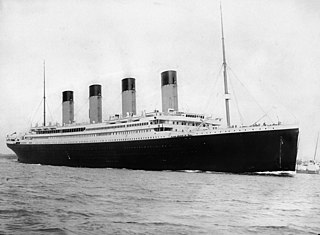
RMS Titanic was a British passenger liner, operated by the White Star Line, that sank in the North Atlantic Ocean on 15 April 1912 after striking an iceberg during her maiden voyage from Southampton, England, to New York City, United States. Of the estimated 2,224 passengers and crew aboard, more than 1,500 died, making it the deadliest sinking of a single ship up to that time. It remains the deadliest peacetime sinking of an ocean liner or cruise ship. The disaster drew public attention, spurred major changes in maritime safety regulations, and inspired many artistic works.

Titanic II is a 2010 American drama disaster film written, directed by and starring Shane Van Dyke and distributed by The Asylum. Despite the title, it is not a sequel to the 1997 critically acclaimed film, but is a mockbuster of it. It was released direct-to-TV in Australia on 7 August 2010. It premiered on Syfy, on Sky in the UK and Ireland on 9 August. It was released on 25 August in the United States to critically negative response, though the film's ensemble cast performances, particularly that of Bruce Davison, received praise.

Titanic is a four-part television serial and period drama written by Julian Fellowes. It is based on the passenger liner RMS Titanic, which sank in the North Atlantic Ocean in April 1912 following a collision with an iceberg on her maiden voyage from Southampton to New York City.

There have been several legends and myths surrounding the RMS Titanic. These have ranged from the myth about the ship having been described as "unsinkable", to the myth concerning the final song played by the ship's orchestra.

Titanic Lifeboat No. 1 was a lifeboat from the steamship Titanic. It was the fifth boat launched to sea, over an hour after the liner collided with an iceberg and began sinking on 14 April 1912. With a capacity of 40 people, it was launched with only 12 aboard, the fewest to escape in any one boat that night.
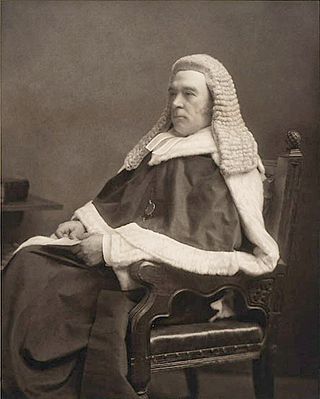
The sinking of the RMS Titanic on 15 April 1912 resulted in an inquiry by the British Wreck Commissioner on behalf of the British Board of Trade. The inquiry was overseen by High Court judge Lord Mersey, and was held in London from 2 May to 3 July 1912. The hearings took place mainly at the London Scottish Drill Hall, at 59 Buckingham Gate, London SW1.




















